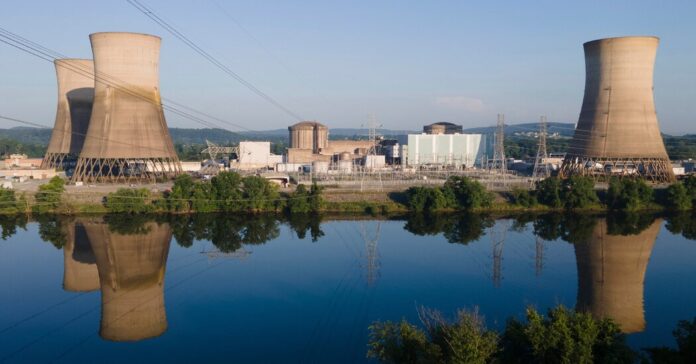The U.S. government is providing a $1 billion loan to revive the Three Mile Island nuclear power plant in Pennsylvania, a project designed to supply clean energy to Microsoft’s growing network of data centers. The move signals a shift in attitudes towards nuclear power, fueled by the energy demands of tech giants and concerns about grid reliability.
The Revival of a Controversial Site
Three Mile Island Unit 1, which ceased operations in 2019, is set to reopen with the help of federal funding. This is particularly notable given the site’s history: in 1979, Unit 2 suffered a partial meltdown – the worst nuclear accident in U.S. history – which triggered widespread public fear and stalled nuclear development for decades.
The decision to restart Unit 1 represents a dramatic reversal, facilitated by a partnership between Microsoft and Constellation, the plant’s owner. Microsoft seeks to secure a stable, carbon-free energy source for its data-intensive operations, including AI and cloud computing. Other tech firms, like Google and Amazon, are also exploring nuclear partnerships to meet their sustainability goals.
Nuclear Power: A Changing Landscape
The shift in sentiment towards nuclear energy is driven by several factors. First, the growing energy demands of data centers require large-scale, reliable power sources. Second, nuclear energy offers a low-carbon alternative to fossil fuels, aligning with corporate and government sustainability initiatives.
The U.S. regulatory environment, however, remains a significant barrier. Industry advocates argue that lengthy and costly approval processes hinder nuclear construction. Meanwhile, countries like China are rapidly expanding their nuclear capacity with streamlined regulatory frameworks, potentially outcompeting the U.S. in this sector.
Why This Matters
The Three Mile Island restart isn’t just about one plant; it’s a test case for broader nuclear revival efforts. If successful, it could pave the way for more federal funding and private investment in nuclear projects, reshaping the U.S. energy mix. This trend raises questions about the long-term costs, safety regulations, and the role of nuclear power in a future dominated by digital infrastructure.
The U.S. government’s $1 billion loan signals a pragmatic approach to energy security and climate goals, leveraging nuclear power to meet the demands of a rapidly expanding digital economy.





















































